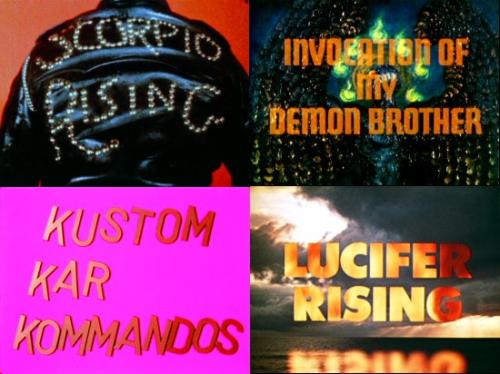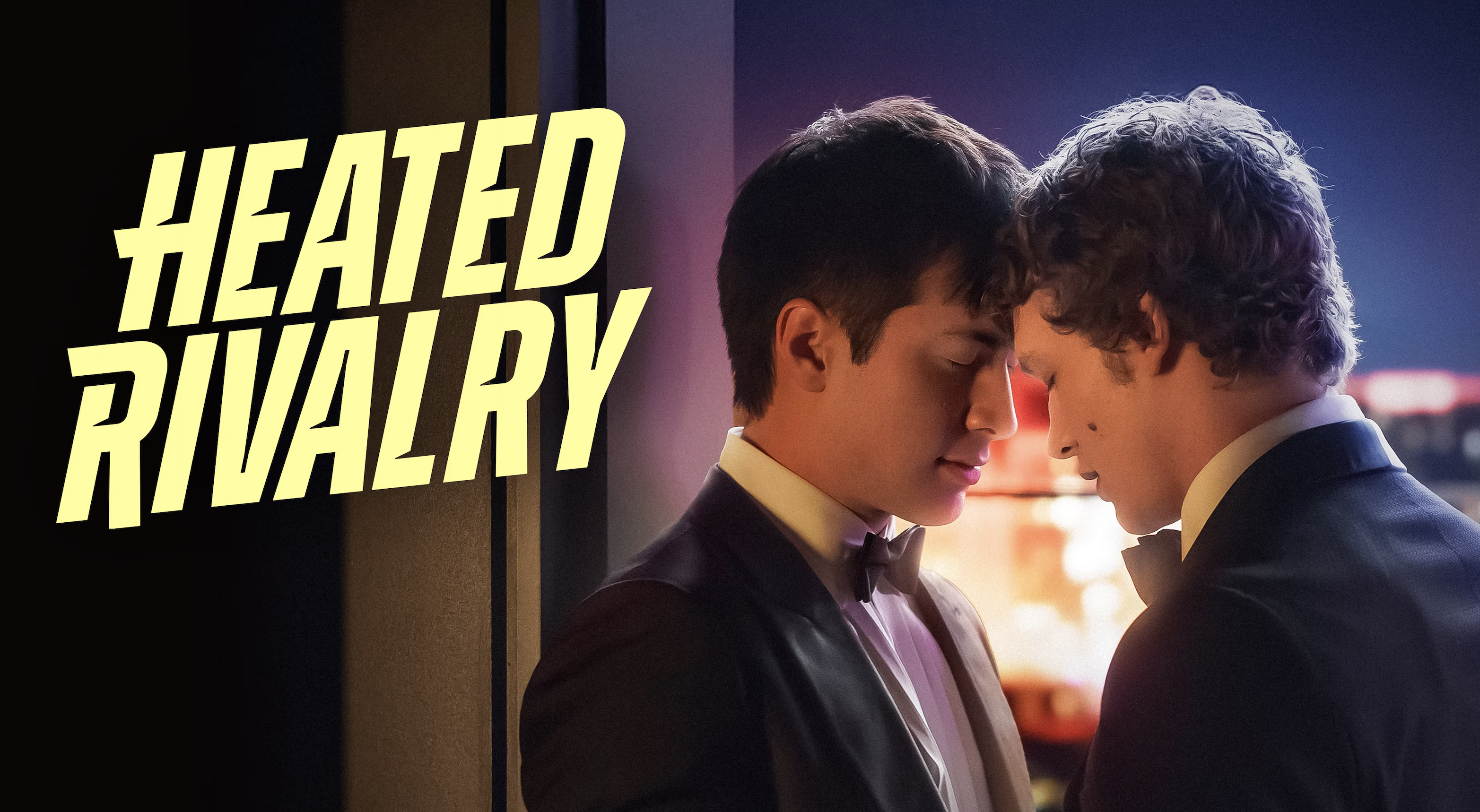Pete’s Peek | The visionary Kenneth Anger comes to DVD

When you think of living legends, Kenneth Anger certainly ranks among them. The American-born avant-garde artist has always stayed 10 steps ahead of any other filmmaker, and has never compromised his vision.
In the 1940s, he was the first to put homoerotic themes in his work; during the 1950s, he pre-empted the use of pop songs as soundtrack (making him the granddaddy of the music video); and in the 1960s, he made the notorious black magician Aleister Crowley a popular icon. Never one to play safe, in the 1970s he also published the scandalous Hollywood Babylon, a best-selling book that detailed the sordid scandals of many famous and infamous Hollywood celebrities from the 1900s to the 1950s.
Now aged 82, Anger shows no sign in retiring as he continues to make new films, in addition to maintaining and preserving his legacy, which continues to influence new generations of filmmakers.
On 25 May, the BFI releases Magick Lantern Cycle, an extensive 3-disc collection on DVD and Blu-ray, covering 30 years of Anger’s work. Included in this delicious box-set is the 1947 short, Fireworks, which caught the attention of Jean Cocteau; Rabbit's Moon, the once-lost 1950’s Commedia dell'arte-style classic; the fetishistic 1960s shorts Scorpio Rising and Kustom Kar Kommandos, and Anger’s occult-themed cult hits, Inauguration of the Pleasure Dome, Invocation of My Demon Brother and Lucifer Rising. Also included is Anger’s 2002 film on the paintings of Aleister Crowley and the 2006 documentary, Anger Me.

To coincide with the DVD release, the visionary artist was a recent guest at the BFI Southbank where he joined in a discussion of life and work. Here is what he had to say…
What was your motive to make films? My grandmother used to take me to the cinema about twice a week. Some of the films she took me to had very adult themes, but I’m grateful to her for doing that. Anyhow, I thought, ‘I can do that’. But I never wanted to go into the movie industry. I could have, but it was 1950, I had just finished High School and Hollywood had fallen under the ‘red scare’. Even though I wasn’t involved in politics, I found it so disgusting. And I had friends of mine, like the wonderful actress Gale Sondergaard who couldn’t work anymore. Also I had a chance to go to Paris (Jean Cocteau had invited Anger to France after seeing Fireworks). I guess that closed the door on me going into the industry. But filmmaking requires a lot of psychological willing to battle. Look at Olivier Stone and his film Platoon, He had that script for 20 years before it was made. That’s tenacity. It’s just a tough racket, making movies – in any country.
Hollywood Babylon was actually published while you were living in France… It got its American release in 1965, but was first published in France in the 1950s. I arrived in the country knowing I could speak French (I had studied it at High School), which was lucky because someone like Jean Cocteau would never utter a word in English. They have a very snobbish attitude about French. It’s the only language.
The latest updates, reviews and unmissable series to watch and more!
Rabbit’s Moon was filmed in 1950, but was only edited in 1972 after being lost for many years… I would not have done Rabbit’s Moon without the generosity of the Cinémathèque Française. They found me the 35mm negative, the same that Cocteau used for Orphée in 1949, and we made it during the month of August, when Paris becomes a ghost town, in a tiny studio with a professional crew and cast of actors from the Marcel Marceau school of mime. I came up with the idea of using the classic figures of the Commedia dell'arte – Pierrot, Columbine and Harlequin – in a simple love triangle, symbolised by an unattainable moon. I then gave it to the Cinémathèque while I went to Rome to film the Tivoli gardens. It was stored with 10,000 other films and basically got mislaid. Then, in 1970 I got a call from Paris that they had found the negative. So I recut it using Doo Wop music – with all its references to the moon, unrequited love and so for. The fact that 20 years had lapsed probably changed the soundtrack, but the film finally got realized and I’m happy with it.
Eaux d'artifice, about the garden fountains of the Villa d'Este in Tivoli in Italy, is now regarded as a culturally significant work… I first knew about these amazing gardens through Piranesi’s 18th-century etchings in which everything seemed bigger than it was. I realized that Piranesi’s trick was to shrink the people. And so I did the same by having a midget as my main person. She was a wonderful little lady called Carmilla who I met through Fellini. It’s one of the films that I have the best recollection of, because I got permission to do it from the department of antiquities in Italy. Today, that would be impossible.
Many of your early films are now lost or like The Story of O were never completed… In 1960 I got permission to film Pauline Réage’s erotic book, Histoire d'O. It was very daring at the time, a charming adult fairytale about S&M. I planned to film it in the style of Robert Bresson – very subdued and restrained. I had a little money and help from the boyfriend of the girl I chose to play O. It later turned out that he was the kidnapper of Eric Peugeot (the youngest son of the founder of Peugeot). But when this all blew up and I found out the money film came from the ransom that was the end of the production. There are a few surviving bits I shot of her, its erotic but its not explicit. In fact that’s my complaint about porno, its too explicit and never leaves any room for the imagination.
You got a surprise while editing Scorpio Rising, the 1964 experimental short about bikers, the occult, Jesus and Nazis… On my doorstep in Hollywood someone left a 16mm film container addressed to the Lutheran Church. It was a Sunday school film called Our Last Journey to Jerusalem. Well I thought it was serendipity and cut it into my film. Later, the church found this out and contacted me. But they let it go after I told them they should be ashamed for showing such a silly film to children because it made Jesus look like an idiot.
A member of the Manson gang stole the original print of Lucifer Rising, which starred Marianne Faithfull… One way you don’t want to preserve film is to bury it in the desert where the temperature gets to be hot enough to fry an egg. I made what I could from the scraps of the rest. Bobby Beausoleil and I had had a quarrel. I gave him some money to buy an amp for his band. He went to San Francisco in theory to buy the amp and he came back with a package wrapped in black plastic. I had a dog at the time called Snowfox, which showed great interest in this package. So I cut it open and found a solid block of marihuana. That’s how we broke up. Today he’s serving time in a prison in Oregon and if he gets a postcard from me he’s lucky.
You declared your own death (as a filmmaker) in 1967 following the theft… I published one obituary, after my film of Lucifer Rising was stolen. But when I moved back to London, it was people like Mick Jagger and Marianne Faithfull who actually encouraged my to keep filming. Is there anything that excites you today? I’m still fascinated with what film can do and I like making films about subjects that I haven’t made before. I don’t like to repeat. I still find it a challenge. A dare. During the 21st century I’ve made films about Disney toys, suicide and the Hitler Youth. I never thought I would, but the opportunity arose with the use of archive footage from Germany. I love working with archive footage, and I continually find discoveries. While making Ich Will! I found Hitler made interesting gestures when he finished speaking and acknowledged the crowd. He was the rock star of Germany of that period, and I took pleasure in depriving him of any voice.
Mouse Heaven has an all toy cast… It’s a fantasy I made in featuring a collection of extremely rare vintage Mickey Mouse toys. But I don’t call it Mickey Mouse, because Disney is very touchy on that name. But Mouse Heaven I can get away with. The collectors are called Mousers and it’s always referred to as the Mouse. There’s no definitive version of any of your films… This is the problem with my films. I’m a restless, creative artist and I never say this is the absolute end, that its finished, its over. There’s no real version. It’s a work in progress and as long as I’m alive I will continue to cut, revise and rearrange my films.
Released 25 May

